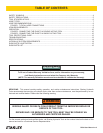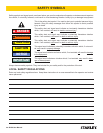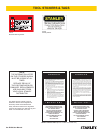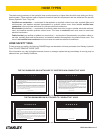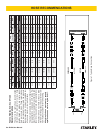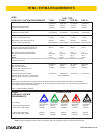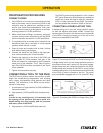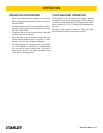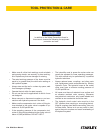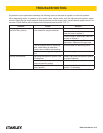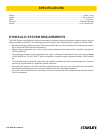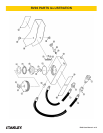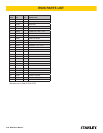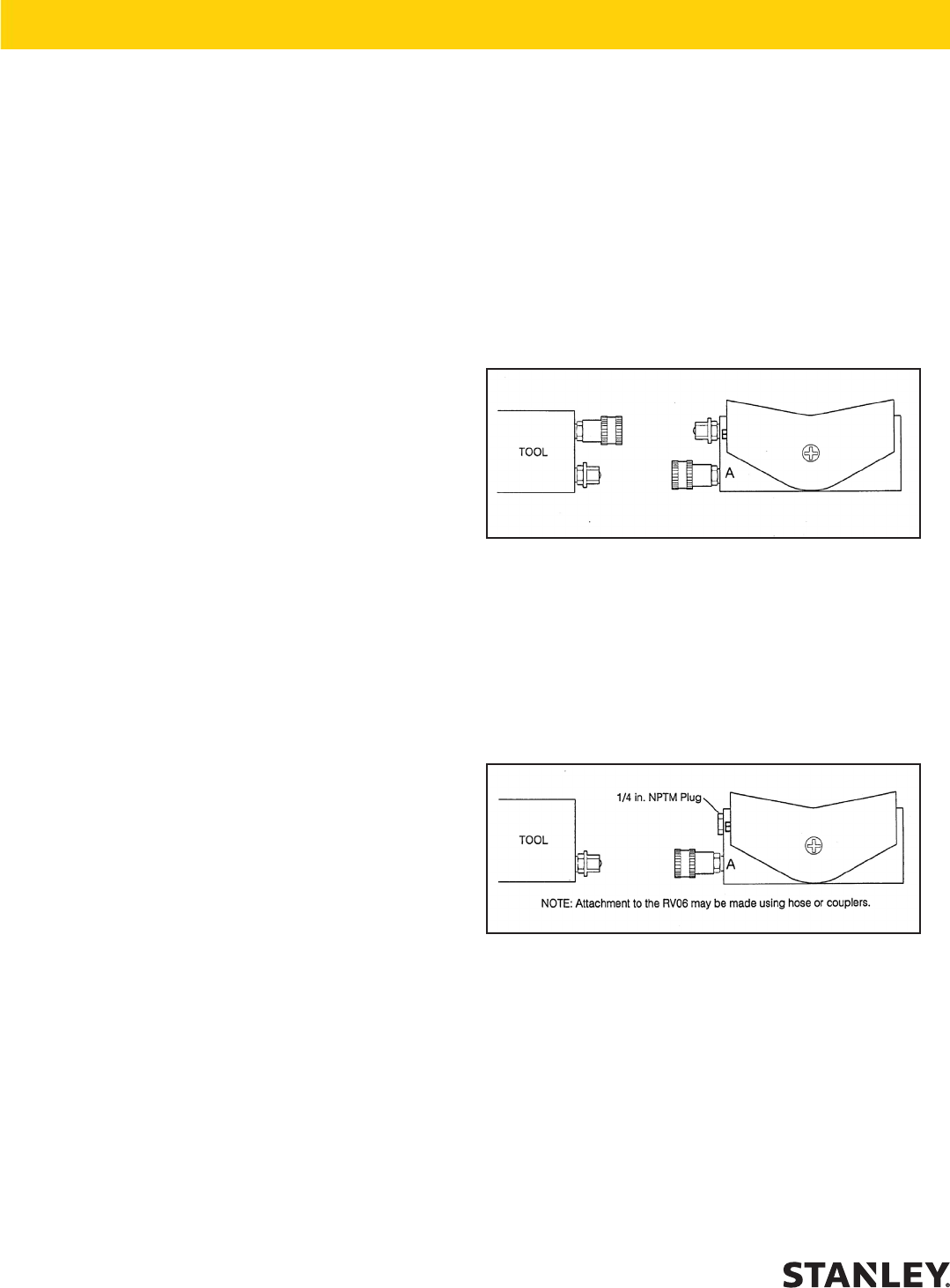
10 ► RV06 User Manual
PREOPERATION PROCEDURES
CONNECT HOSES
1. If the RV06 is to be used on or near electrical lines,
both of the hoses used to connect the RV06 to the
intensier must be labeled and certied non-con-
ductive (see Hose Recommendations). Both pres-
sure and return hoses must be rated for a minimum
working pressure of 10,000 psi/690 bar.
2. Make certain that all ttings, connectors, and quick
couplers used to make connections with the RV06
and the intensier are rated for 10,000 psi/690 bar.
3. It is a good practice to connect return hoses rst and
disconnect them last to minimize or avoid trapped
pressure within the tool or hoses.
4. Wipe all hoses and couplers with a clean, lint-free
cloth before making connections.
5. Connect the hoses on the RV06 to the high-pres-
sure outlet and return port of the intensier.
6. Observe the marking on the end of the RV06 and
the intensier: P is the pressure inlet port of the
RV06 and should be connected to the P (pressure
outlet) port of the intensier. The T (tank or return)
port of the RV06 should be connected to the T port
of the intensier.
7. Tighten all connections securely.
CONNECTING A TOOL TO THE RV06
The RV06 can be used to control the actuation of both
single and double-acting compression and crimping
tools, cutters, high-pressure lifting devices and rebar
benders. Tool connection to the RV06 can be accom-
plished in three ways:
1. A combination of high-pressure (10,000 psi/690 bar)
hose and couplers.
2. High-pressure (10,000 psi/690 bar) couplings only.
NOTE:
In order to use couplings only, it is necessary that
the spacing of the pressure and return ports of a
double-acting tool align exactly with the pressure
and return ports of the RV06.
3. High-pressure (10,000 psi/690 bar) hose only.
The RV06 is ported at both ends with a 1/4 in. female
NPT ports. When using Teon® tape as a sealant be
careful not to allow the tape to enter the intensier,
RV06, or tools connected to the RV06. Contamina-
tion may disable the intensier, RV06, or the tool.
CONNECTING A DOUBLE-ACTING TOOL
A double-acting tool is any tool using hydraulic power
for both the advance and retract modes. Connect the
advance port of the tool to the advance port (marked A)
of the RV06. Connect the retract port of the tool to the
retract port (marked B) of the RV06.
Figure 2. Connecting the RV06 to a Double-Acting Tool
A single-acting tool is any tool using hydraulic power for
the advance mode and a spring for the retract modes.
Single-acting tools use a single connection to the RV06.
Single-acting tools connect to the RV06 in a way similar
to double-acting tools. Only the advance port (marked A)
of the RV06 is used to connect to the tool. The return
port (marked B) is plugged with a 1/4 in. male NPT plug.
Figure 3. Connecting the RV06 to a Single-Acting Tool
OPERATION




